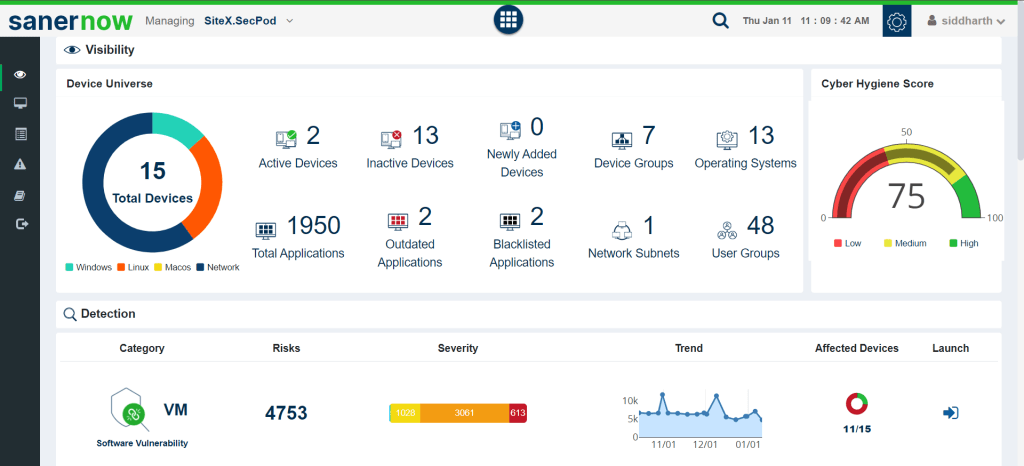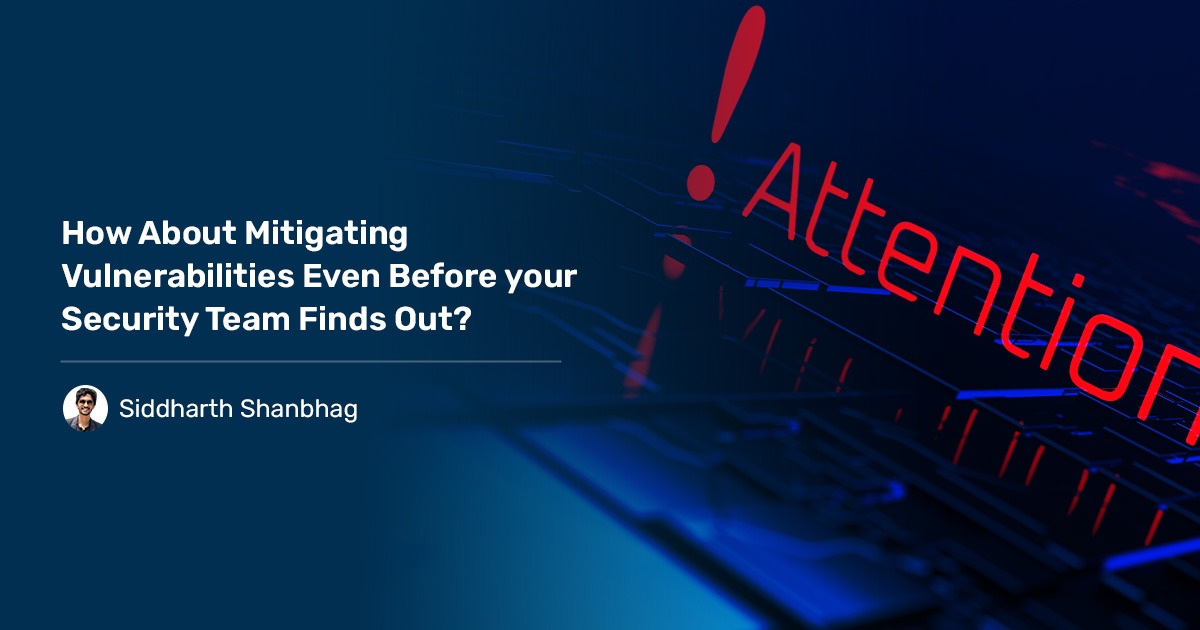Companies are taking proactive steps to address vulnerabilities before their security team find and resolve them. While this approach is necessary and effective to a certain extent, it carries the risk of delayed responses, leaving systems exposed to potential threats. According to Check Point Research, Global Cyberattacks have increased by 38% in 2022, compared to 2021. The need for a proactive approach to vulnerability mitigation is more critical than ever. In this blog, we will explore the significance of mitigating vulnerabilities before the security team discovers them and discuss some strategies to adopt a proactive approach to safeguarding your digital assets.
The Importance of Proactive Security Measures
- Reducing the Attack Surface
Addressing vulnerabilities helps in reducing the attack surface available to potential attackers. By identifying and patching vulnerabilities before they are exploited, organizations can close doors that cybercriminals might use to gain unauthorized access. - Cost-Effective Security
Mitigating vulnerabilities before they are exploited is a cost-effective strategy. The aftermath of a cyberattack can result in significant financial losses, damage to the company’s reputation, and many legal cases. Proper security measures can save an organization from these consequences. - Preserving Customer Trust
Customers trust organizations with their sensitive data, and any compromise of this information can break that trust. Proactively securing systems and preventing data breaches not only protects the organization but also preserves the trust of its customers.
Benefits of Proactive Vulnerability Mitigation
- Reduced time to remediation: Identifying and addressing vulnerabilities before they are exploited significantly reduces the time it takes to remediate issues, minimizing the window of opportunity for attackers.
- Cost Savings: Proactively mitigating vulnerabilities can lead to cost savings by preventing potential data breaches, regulatory fines, and reputational damage associated with security incidents.
- Regulatory Compliance: Many regulatory frameworks require organizations to implement proactive security measures. Proactively addressing vulnerabilities helps ensure compliance with industry-specific regulations.
Strategies for Mitigating Vulnerabilities Quickly
- Regular Security Audits
Conduct regular security audits to identify potential vulnerabilities in your systems and networks. These assessments can include penetration testing, vulnerability scanning, and code reviews. Regularly auditing your security posture allows you to stay ahead of potential threats. - Implementing Patch Management
Implement a patch management solution in your organization to ensure systems and software are regularly updated with the latest security patches. Patching your software regularly will help keep your organization safe from cyber attackers. - Employee Training and Awareness
Human error is the most common factor in many security breaches. Educate and train employees about security best practices to minimize the risk of falling victim to phishing attacks or other social engineering tactics. A well-informed workforce serves as an additional layer of security against potential attacks. - Utilizing Threat Intelligence
Stay informed about emerging threats and vulnerabilities by using threat intelligence sources. By understanding the latest tactics, techniques, and procedures employed by threat actors, organizations can proactively implement countermeasures to deal with potential attacks. - Automation
Utilize automation tools to streamline the vulnerability mitigation process, from vulnerability scanning and assessment to patch management. This reduces the time and effort required for manual processes, allowing your security team to focus on more critical tasks.

Conclusion
In a world where cyber threats are constantly evolving, organizations must adopt a proactive stance to safeguard their digital assets. Waiting for security teams to discover the vulnerabilities is no longer a viable option. By implementing regular security assessments, training employees, and staying aware of emerging threats and vulnerabilities, organizations can mitigate vulnerabilities even before they become exploited. Proactive vulnerability mitigation is not just a best practice; it is a necessity in today’s world.


